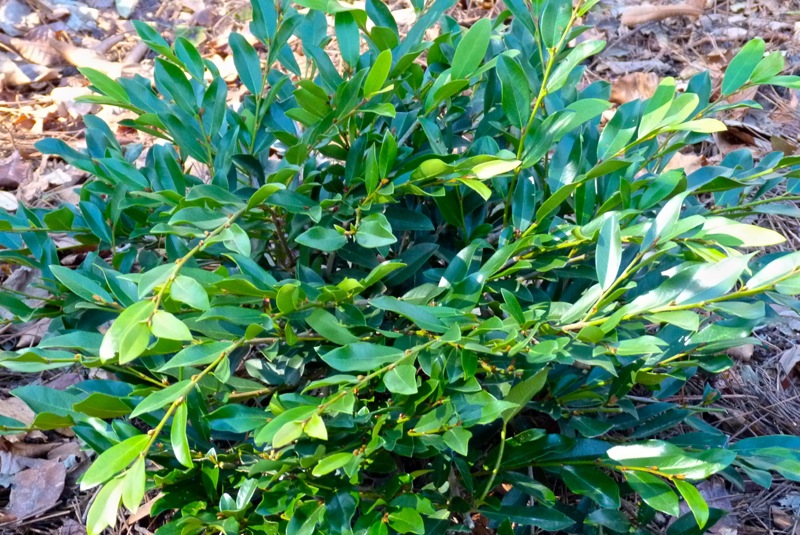Distylium, a New Low-Maintenance Shrub
 Saturday, March 29, 2014 at 7:30PM
Saturday, March 29, 2014 at 7:30PM Sometimes skeletons are lovely. Most of the time we ignore the skeletons in our gardens, those sturdy background plants that give structure to the garden and that support more exciting specimens. These may be trees or shrubs, and often they are evergreen. We walk past them, but how floppy would the garden be without good bones?
One may think of Distylium as a skeleton plant, but newly introduced cultivars are worth more than a passing glance. The shrubs all have beautiful form and are good alternatives to plants like cherry laurel, indian hawthorne, juniper, and boxwood. Never heard of Distylium? Neither had I until this year, but for me it was love at first sight, despite a name that hints of illegal booze-making.
Distylium is a member of the witch hazel (Hamamelidaceae) family, and the resemblance is seen in the tiny red flowers that appear in late winter and early spring. Don't expect to be thrilled by the blooms, if you happen to notice them. The beauty of distylium is the shrub's nicely elongated, evergreen leaves, which lie in a herringbone pattern. 
Dystilium is a native of eastern and southeatern Asia, consisting of about 18 species of evergreen shrubs and trees. There are three Dystilium hybrids recently introduced to the United States. 'Vintage Jade' is the one I acquired. The lustrous, arching foliage has a bluish cast. It grows only to about two feet tall, but will spread to five to six feet wide. It can be used as a ground cover, as a low hedge, or as a border along paths. Distilium 'Vintage Jade'
Distilium 'Vintage Jade'
Distylium 'Blue Cascade' is another introduction that has a nicely cascading habit. It grows about 3 feet high by 4 feet wide. This one has matt, blue-green leaves. It is a nice accent plant or can be planted as a hedge.
Distylium 'Emerald Heights' has an upright, dense form, growing to 5 feet tall and wide. It has dark green, glossy foliage. It makes a great privacy fence or hedge.
One reason I am attracted to this plant is its ease of care. Distylium is both drought tolerant and wet soil tolerant, though it grows best in well-drained, slightly acid soil. It likes sun to partial shade, and it is not bothered by diseases or pests. Growing in hardiness zones 6b-9, it takes both heat and cold. It sounds as good as it looks!
 Permalink
Permalink